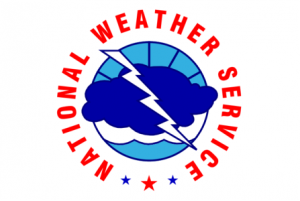 The National Weather Service announces that Severe Winter Weather Awareness Week is October 30 through November 3, 2017 in North Dakota.
The National Weather Service announces that Severe Winter Weather Awareness Week is October 30 through November 3, 2017 in North Dakota.
You should…Get a Kit…Make a Plan…and Be Informed. Keep a high level of situational awareness by listening to the forecast every day, multiple times a day during changing or threatening weather. When snow, sleet, or freezing rain is in the forecast expect that it will negatively impact your day to day routine, and be ready when it does!
Now is a good time to re-familiarize yourself with winter terms and safety rules. Prepare now for the coming winter!
Winter Weather Terminology
Watch is issued when the risk of a hazardous winter weather event has increased, but its occurrence, location, and/or timing is still uncertain. Watches are issued a day or two, sometimes more, in advance of a possible event. Get ready, just in case. And, stay tuned!
Warning or Advisory is issued when a hazardous winter weather event is occurring, is imminent, or has a high probability of occurrence. A warning is used when there is a threat to life or property. An advisory is for less serious conditions that cause inconvenience, and, if caution is not used, could lead to situations that may threaten life or property. The goal is to post warnings or advisories a day or so in advance of the expected event so that you have time to get ready!
People often ask…why are you telling me now about a storm tomorrow? The answer is simple, so that you have time to prepare yourself and your family for the impacts!
Snow criteria for a warning is 6 inches or more in 12 hours or less, OR, 8 inches or more in 24 hours or less. Snow criteria for an advisory is 3 to 5 inches.
Note that criteria for warnings and advisories may be lowered (4 to 6 inches) early (October) and late (May) in the snow season.
Winter Storm Warnings and Winter Weather Advisories may be issued for a combination of elements like snow coupled with wind and blowing snow, or snow coupled with sleet and freezing rain.
Sleet is pellets of ice. Sleet bounces when it hits the ground.
Freezing Rain is rain that freezes when it hits the ground and objects on the ground. It forms a sheet or glaze of ice.
Ice Storm is used to describe occasions when the ice from freezing rain is significant enough (1/4 inch thick or more) to cause damage to trees and down power lines.
Blizzard is a storm with winds of 35 mph or higher AND visibility frequently below 1/4 mile in snow and/or blowing snow AND these conditions last three (3) hours or longer. There is no set temperature requirement for a blizzard.
Wind Chill is that part of the cooling of a human body caused by moving air. Moving air accelerates the rate of heat transfer away from a human body.
Wind Chill Advisory is issued for wind chills of 25 to 39 below zero.
Wind Chill Warning is issued for wind chills of 40 below zero and colder.
Be Prepared
In the cold, dress in layers of loose fitting clothes. Wear a hat, gloves or mittens, and a scarf. Have as little skin as possible exposed to the elements.
When shoveling snow, go slow, take breaks, and don’t get too tired. Keep fire hydrants near your home and business visible and free of snow.
Carry a winter survival kit in your vehicle. Include extra clothing, a blanket, and high energy food like candy bars, peanuts, and raisins. Have a flash light with fresh batteries, paper towels, sand, and a shovel. Keep the gas tank and windshield washer bottle full. Take necessary medications with you when traveling in winter.
Before you set out on a trip, let someone know the time you leave, the route you will take, and the time you plan to arrive. Check the latest forecast and road report. Take a cell phone and be sure the vehicle windows, headlights and taillights are clear of snow, ice, and frost.
If you get stuck, raise the vehicle antenna and tie a brightly colored cloth to it so that others passing by will see you. Keep the exhaust pipe clear of snow, but do not overexert yourself by trying to push or shovel the vehicle out of deep snow. Keep a window open about a half inch. Move your body around. Clap your hands and rub your legs. Stay inside the vehicle. Do not try to walk away unless you can see a place of safety at a close distance. Do not fall asleep! Stay awake!












Comments are closed
Sorry, but you cannot leave a comment for this post.